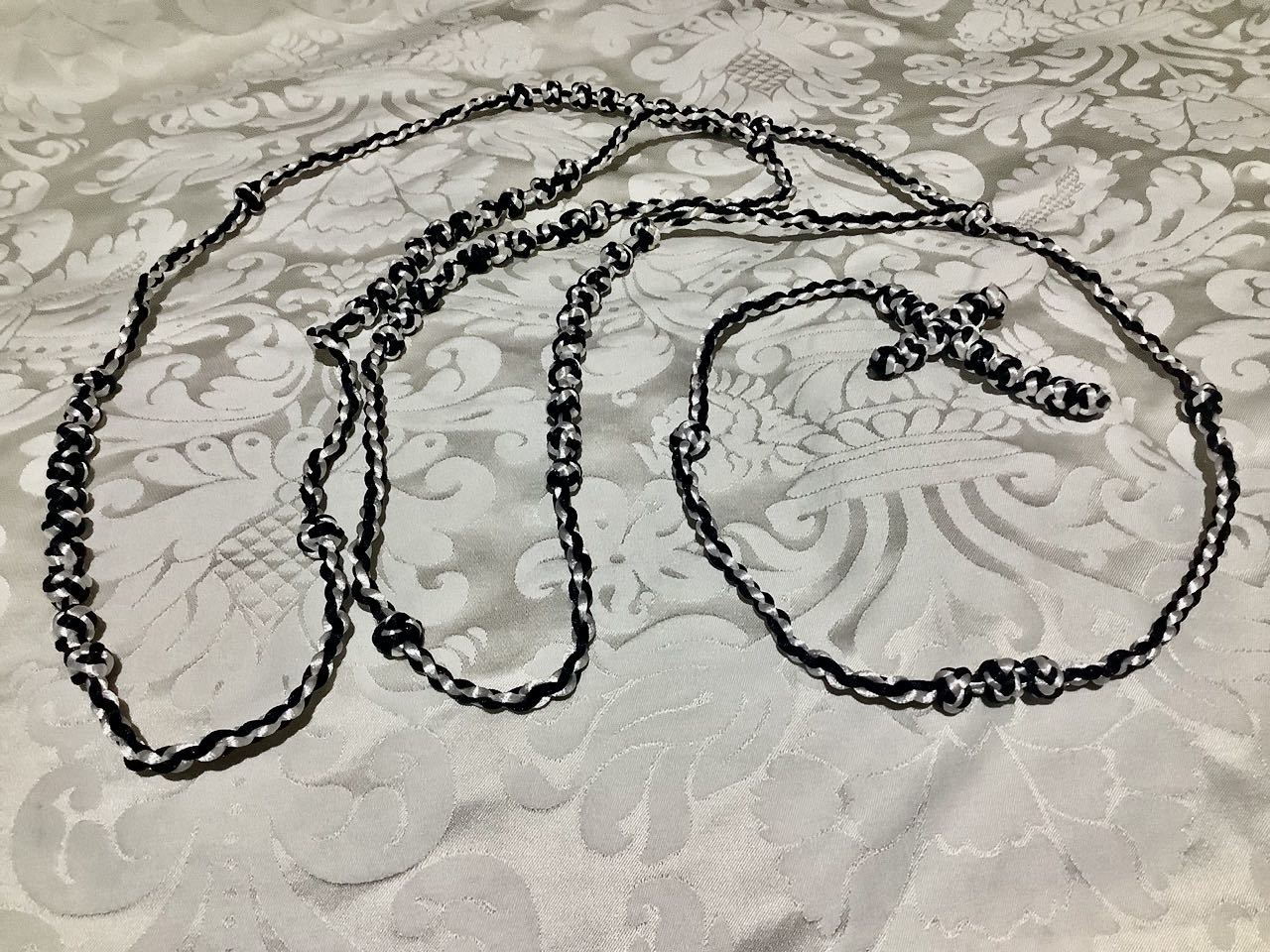So this Knotted Rosary is like the ones I did before, only larger. I used four cords instead of two, treating each pair of black and white as one. Doing so made it much bigger. Large enough that it is the right size for a monk to wear on the side of a religious habit.
The Process
I used about 40m of cord for this, meaning each strand is about 10m long. Before I started, I tied a knot measuring how long the cord was before and after to decide how much to use. It turned out it was about 10cm, so needing to tie about 70 knots plus the sections between meant just over 8m for each strand. Rounded up to play it safe, but at the end of the project, I can say 8m would have been perfect.
With the cord cut, I tied it in the middle with another scrap of cord (you can see the red cord in some of the photos below) and started weaving the first section. I used what on YouTube I saw called a “four-strand round braid”. I got a lot better at this as I went. You can see in the photo where it shows the rosary being joined in a loop. One section is significantly better than another. To do the braid is easy. First, arrange the cords black-white-black-white and then start swapping the position of the two black, then the two white, and repeating.
The Knots
The knots were a pain, and I probably will never repeat this, even though I was happy with the result. I had to wrap the cords up because 40m cord loves to get into knots. This meant I had to push these cord reels through the knot loops as I was tying them, which was tricky and messy. It was challenging to do unless I was sitting at my desk.
Also, the knots did not look good if I let the two cords I was treating as one get wrapped around each other inside the knot, so I spent a lot of time straightening them out as I tightened the knots. Another difficulty was my use of four strands that kept trying to wrap around each other unless I kept them in position on the desk as I was working. It was often just more frustrating than enjoyable.
Finished Result and Photos
So very happy with what I got, but this will be a one-off. Not the last of the Rosaries that I plan to share here. I got four pairs I want to make from beads and chains and a few others using much more straightforward knots with beads.













